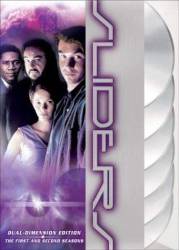Factual error: When the missile intersects with the asteroid, and nothing happens right away, Arturo mentions to Bennish that light travels at over 186,000 miles per second, implying that the light from the explosion will take a moment to become visible. The problem is that by the time the missile is about to hit the asteroid, the light from the missile itself will have just as much lag time as the asteroid's explosion. The explosion should therefore have appeared immediately upon seeing the missile hit the asteroid.
Factual error: An early nuclear warhead would be totally inadequate for destroying an asteroid 10KM in diameter - you'd need a bomb roughly FIFTY THOUSAND times more powerful than the Project Trinity bomb.
Factual error: The light and the noise from the explosion are in sync to the observers on earth. However, as anyone who has been to a fireworks display can tell you, sound travels much slower than light. In fact, as far away as the explosion was, it's questionable whether any noticeable sound would reach earth at all. Even if it did, it would be heard long after the light is seen.






Chosen answer: Quinn's brother was going to be a recurring character, so "introduced" in this case referred to the actor becoming a semi-regular.
Jean G